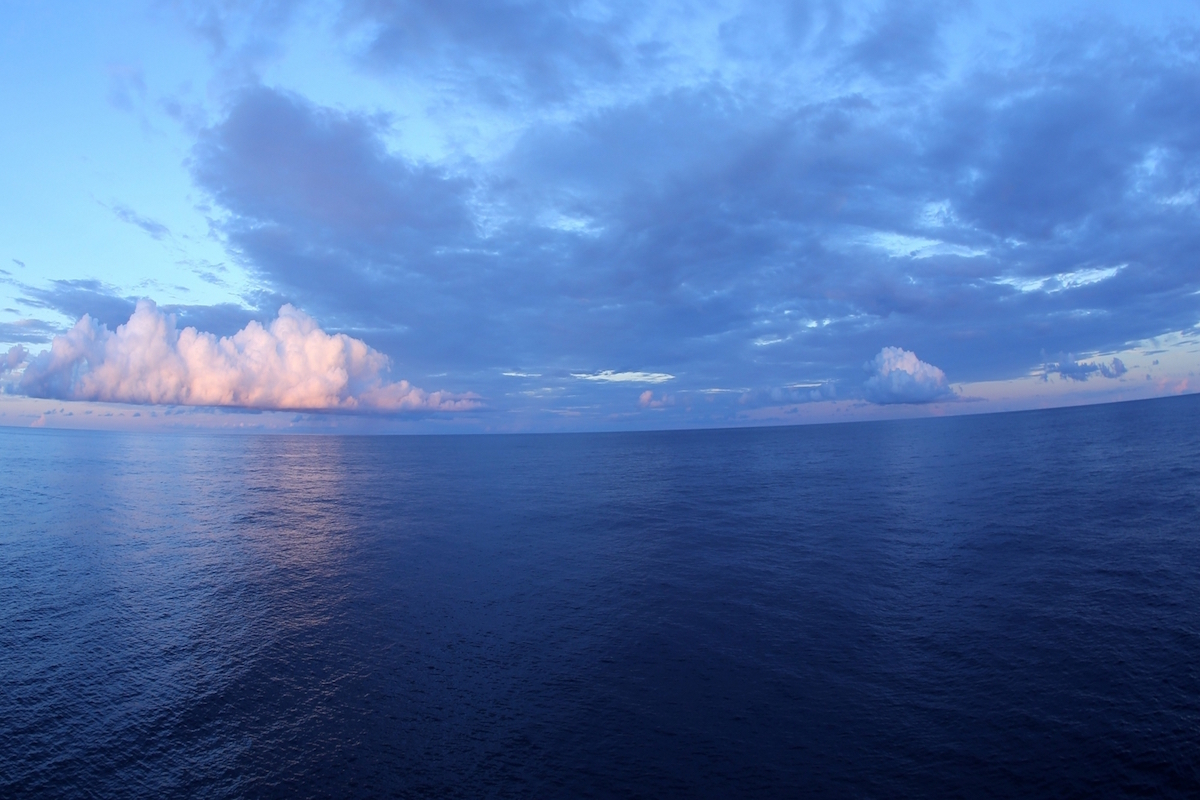Hugo Grotius (15831645) was a Dutch jurist and humanist. In 1609, he wrote a defence of trading rights for the Dutch East India Company and called for free access to the oceans for all nations. That was the first maritime doctrine on record challenging the claims of a number of maritime states asserting sovereignty over large portions of the high seas. Grotius was considered the father and founder of modern international law.
“The seas were free to all nations but belonged to none of them”. Subsequent developments in international maritime law reflect his philosophy to a large extent. From the 17th century, a state’s rights and jurisdiction on the ocean were limited to a specific belt of water extending 3 nautical miles from the coastline. All waters beyond the limit were international waters or free seas. There was no concept of maritime zones, and no state could claim full sovereignty over seabed, subsoil, the water column and airspace. By the 19th century, the concept of free seas, open to all, was the prevalent view, reflecting the dominance of large maritime powers like Great Britain.
This fostered a body of law that favoured free navigation and conduct of both commerce and naval operations across the world’s oceans. No agreement came from the efforts of the League of Nations in the early 1930s to decide on extending state claims of sovereignty over adjacent waters. The situation changed after World War II. The scarcity of land-based natural resources forced states to exploit offshore resources. With the progress of science and technology, states began to realise the growing importance of valuable hydrocarbons and other non-living resources of the high seas as vital to their economic development.
Advertisement
These factors brought into focus a new concept, the Continental Shelf. Using the customary international law principle of a nation’s right to protect its natural resources, President Truman of the United States in 1945 declared US control over all the natural resources of its continental shelf. Many other states in Europe and some Latin American countries like Chile, Peru and Ecuador followed that example, extending their claim to 200 nautical miles to include their fishing grounds. In a short period, the Continental Shelf became a new customary international law.
During the 1960s, again because of advanced technology, fish stocks in the seas which were concentrated over the Continental Shelf were subject to intensive exploitation by distant water fishing fleets. Coastal states’ efforts to acquire exclusive rights to manage and exploit these living resources were inevitable. The result was the emergence of a new offshore zone, the exclusive economic zone (EEZ) that also became another international law. In subsequent years, various attempts were made to create a broad spectrum law of the sea regime that ultimately culminated in the creation of the United Nations Convention on the Law of Sea (UNCLOS).
The Convention convened in 1973 was signed on 10 December 1982 in Montego Bay, Jamaica. “This marked the culmination of more than 14 years of work involving participants by more than 150 countries representing all regions of the world, all legal and political systems and the spectrum of socio/economic development”. The Convention will turn 40 in 2022. It came into force in 1994 after it had been ratified by the requisite 60 countries. UNCLOS is the globally recognised regime dealing with all matters relating to the law of the sea; it is a comprehensive treaty that has been signed by 168 countries.
According to the convention, each country’s sovereign territorial waters extend to a maximum of 12 nautical miles (22km) beyond its coast including both marginal sea and inland waters. Within this zone, the coastal state exercises full sovereignty over the airspace, seabed and subsoil. All states have the right of innocent passage through the territorial sea of another state but there is no right of innocent air space passage. Even warships are to be accorded innocent passage even though in reality many states require prior authorisation for warships entering their territorial waters. The law is unsettled here.
Innocent passage is considered moving through the territorial waters in a way that is not prejudicial to the security of the coastal state, including any stopping and anchoring necessary for ordinary navigation. The law also grants the right of transit passage through narrow straits used for international navigation. Beyond its territorial waters, every coastal country may establish an exclusive economic zone (EEZ) extending 200 nautical miles (370 km) from shore. Within the EEZ, the coastal state has the right to exploit and regulate fisheries, generate energy from waves and conduct scientific research.
Foreign vessels and aircrafts are allowed to move freely through and over the zone. With regard to the seabed beyond territorial waters, every coastal country has exclusive right to hydrocarbons and other resources in the seabed up to 200 nautical miles from shore or to the outer edge of the continental margin, whichever is further, subject to an overall limit of 350 nautical miles (650km). This area is known as the continental shelf. Where the territorial waters, EEZs or continental shelves of neighbouring countries overlap, a boundary line is to be drawn by agreement to achieve an equitable solution.
In cases where countries are unable to reach an agreement, the matter should be decided either by the International Court of Justice or by an arbitration tribunal. The high seas lie beyond all these zones where all states enjoy unhindered freedom of navigation. The waters and airspace of this area are open to use by all countries except for activities prohibited by international law like the testing of nuclear weapons. Permitted activities include apart from navigation and fishing, the laying of submarine cables and pipelines and overflight of aircraft.
The bed of the high seas is known as the International Seabed Area. In its original form in the 1982 Convention, the detailed legal regime was not acceptable to developed countries because of excessive regulations. The provisions were modified extensively by a supplementary treaty in 1994 to meet their concerns. Under the modified regime, the minerals on the ocean floor beneath the high seas are deemed “the common heritage of mankind” and their exploitation is administered by the International Seabed Authority. UNCLOS is hailed as one of the most comprehensive instruments of international law.
Its 320 articles and 9 annexes contain an all-encompassing legal regime for the world’s oceans and seas, establishing rules governing all activities in the oceans and the use of their resources ~ including shipping, navigation and overflight, exploration and exploitation of minerals and hydrocarbons, fishing, conservation and protection of vulnerable marine ecosystems and prevention of pollution. It embodies in one instrument the codification of traditional rules for the use of oceans as well as the development of new rules on emerging scenarios. It is a unique instrument often referred to as the “constitution for the oceans”.
The authority of UNCLOS is based on its near-universal acceptance. The General Assembly performs an oversight function with respect to ocean affairs and the law of the sea. There was a time when experts apprehended that technological advances and population pressure would create a situ ation of eventual demise of ambiguous oceanic sovereignty and transfer to a system of partition so that the oceans might prove ‘the last frontier in the spread of the nation-state system’. They also apprehended that if every coastal state wanted to exercise its maximum possible claims, just less than 50 per cent of the world’s oceans would fall under some form of national jurisdiction. Open seas would decline in area and space.
Fortunately, the apprehensions did not become a reality. The maritime jurisdictional regime established and codified through UNCLOS involves innovative checks and balances of rights and responsibilities of coastal states versus international sovereignty and sovereign rights offshore. UNCLOS works on the notion that all problems of ocean space are closely inter-related and need to be addressed as a whole. Delimitation is a process involving division of maritime areas in a situation where two or more states have competing claims. For these claimant states, delimitation implies restriction on their perceived sovereign rights.
Extensive overlapping claims forestall the delimitation exercise. The maritime boundary like the land boundary is a sensitive matter and should be handled carefully and with understanding of contrary viewpoints. That is why even in the 21st century, many maritime boundaries have remained unsettled. The negotiating process is very important for achieving agreement on the basis of the 1982 Convention. A maritime boundary to be durable must be fair and equitable and take into account the special circumstances of the area relevant to delimitation.
Despite serious and meaningful negotiations, if difficulties and dispute arise, the parties should resort to the third party settlement procedure. Alleged violation of sovereign rights and maritime space between Nicaragua and Colombia in the Caribbean Sea and maritime delimitation between Somalia and Kenya in the Indian Ocean are two important cases awaiting judgement by the International Court of Justice. UNCLOS is an important legal and management framework that contributes greatly to the maintenance of peace, justice and progress for all peoples of the world.
Achievement of the goals of the Convention” contribute to the realisation of a just and equitable international economic order which takes into account the interests and needs of mankind as a whole and in particular the special interests and needs of developing countries, whether coastal or landlocked”. The ocean is vast, boundless and covers 140 million square miles, some 72 per cent of the Earth’s surface. It is the responsibility of the world to keep the ocean safe, accessible and free from abuse.
(The writer is a former central civil service officer who retired from the Ministry of Defence. He used Law of the Sea, a policy primer by the Fletcher School of Law and Diplomacy as a source document for this article)
Advertisement











